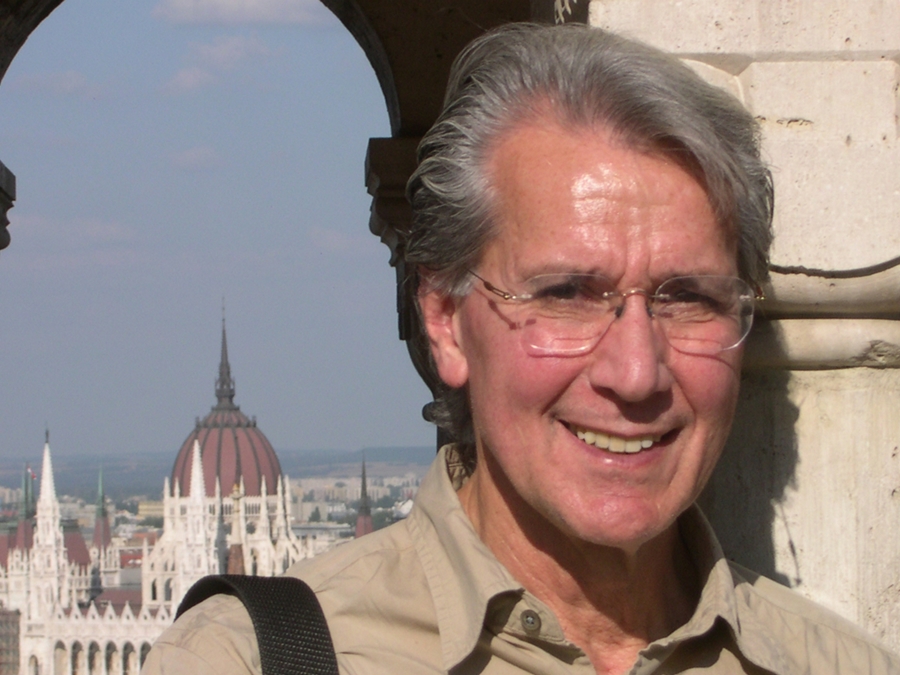Solution to Schrödinger's Cat Problem Proposed in New Paper
FAYETTEVILLE, Ark. – A paper recently published in the journal Quantum Engineering proposed a solution to a long-standing problem in quantum physics, popularly known as the Schrödinger's Cat problem. The paper, "Entanglement and the Measurement Problem," was authored by emeritus professor of physics, Art Hobson.
Schrödinger's Cat is a long-standing thought experiment used to explain the seemingly paradoxical state of quantum superposition, in which, for example, an atom is said to be both decaying and not decaying at the same time. The thought experiment begins when one imagines surrounding this atom with a measurement device that can detect an emitted particle. The device could, for instance, be a Geiger counter that will click when the particle hits it. According to quantum physics, this changes things. The atom is no longer said to be in a superposition of decaying and not decaying, but "entangled" with the detector. This entanglement appears to describe a detector that is both clicked and not clicked.
That said, physicists know that a large object like a Geiger counter cannot be in a superposition of clicking and not clicking. Erwin Schrödinger, one of the inventors of quantum physics, dramatized this by imagining that the detector is connected with a cat in such a way that, when the detector clicks, the cat dies. The cat effectively becomes the detector. Quantum physics then seems to imply that the atom plus cat entanglement describes a cat that is both dead and alive — an example of the long-standing "measurement problem."
Hobson's paper examines entanglement by studying experiments conducted in 1990 at the purely microscopic level. In these experiments, two photons are entangled with each other. This entangled situation is identical mathematically with the atom plus detector entanglement, but the entirely microscopic nature of the two-photon system allows experimenters to manipulate the system in ways that would be impossible if one of the objects were a detector.
The implication of this, Hobson argues, is that entanglement is not what was previously thought, which was that the Schrödinger's cat entanglement predicted an undecayed nucleus and a live cat that are superposed with a decayed nucleus and a dead cat. He argues the experiments show that the theory predicts an undecayed nucleus that is correlated with a live cat, and a decayed nucleus that is correlated with a dead cat. Thus, the entangled state says the following: the nucleus is undecayed whenever the cat is alive, and the nucleus is decayed whenever the cat is dead. Hobson concludes that this solves the measurement problem.
Hobson retired in 1999 after 35 years of teaching. He has spent most of his time since retirement studying the foundations of quantum physics. He is a fellow of the American Physics Society. In 2006, he received the Robert A. Millikan Award, given by the American Association of Physics Teachers to members who have made notable and creative contributions to the teaching of physics. Since retirement, he has authored several research papers and a book on the foundations of quantum physics.
Contacts
Art Hobson, professor emeritus
Department of Physics
479-575-5918,
ahobson@uark.edu
Headlines
Four Students Named Goldwater Scholars; Two Earn Udall Honorable Mentions
Four U of A students have received the prestigious Goldwater Scholarship, an award for top students in mathematics, science, and engineering.
Cross-Campus Collaboration Culminates in New Outdoor Geological Installation
Grand opening event to celebrate the new GeoLab installation at the U of A’s Gearhart Hall courtyard is set for May 3. The installation will be open to the public year-round.
First Students to Use Online Degree to Hone Nursing Leadership, Elevate Patient Care
Hanna Baxendale and Wendi Kimbrell will begin coursework in the Doctor of Nursing Practice-Executive Master of Business Administration program offered by the Eleanor Mann School of Nursing and Walton College.
Join the Office for Sustainability on a Final Cruise to Campus
Cruise to Campus Wednesdays have fostered a gathering space for individuals interested in biking to campus. Drop by the Old Main Lawn from 7:30-10 a.m. Wednesday for coffee, something to eat and conversation.
Fay Jones School Student Ambassador Program Gives Voice to Design Students
The student ambassador program at the Fay Jones School of Architecture and Design is built to connect top design students with their school, its alumni, its future students and others inside and outside the school.





